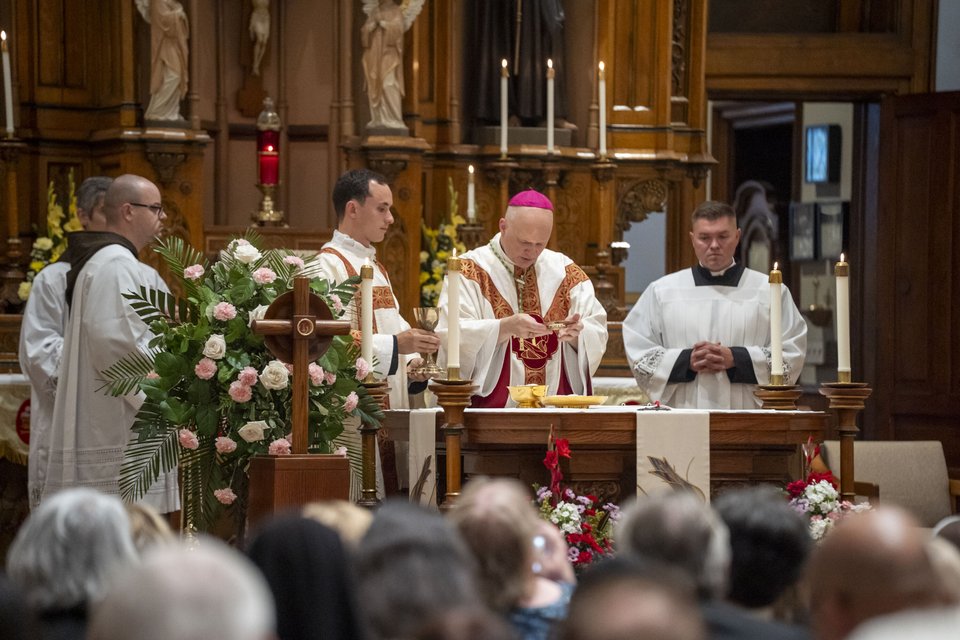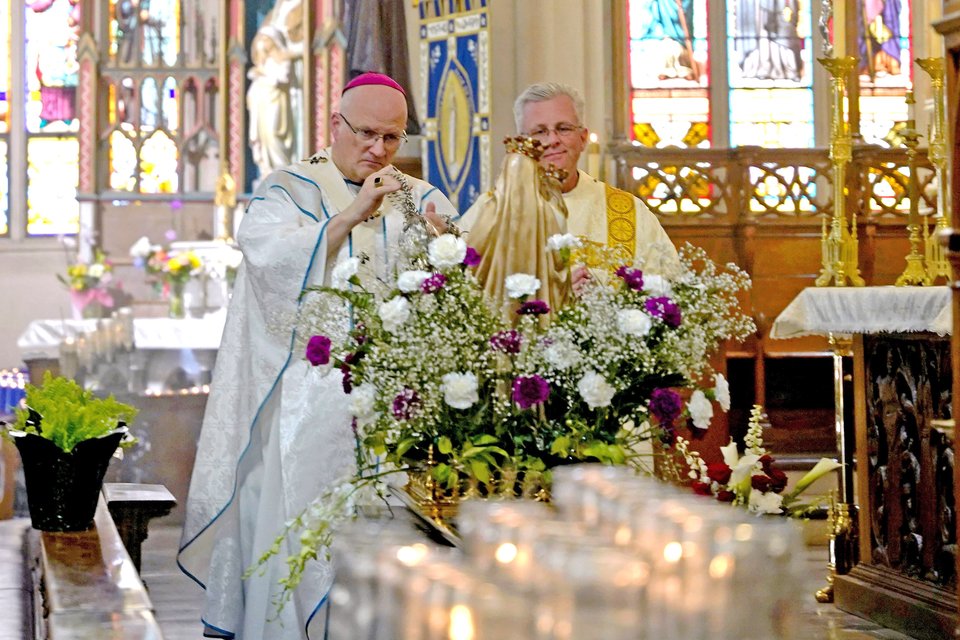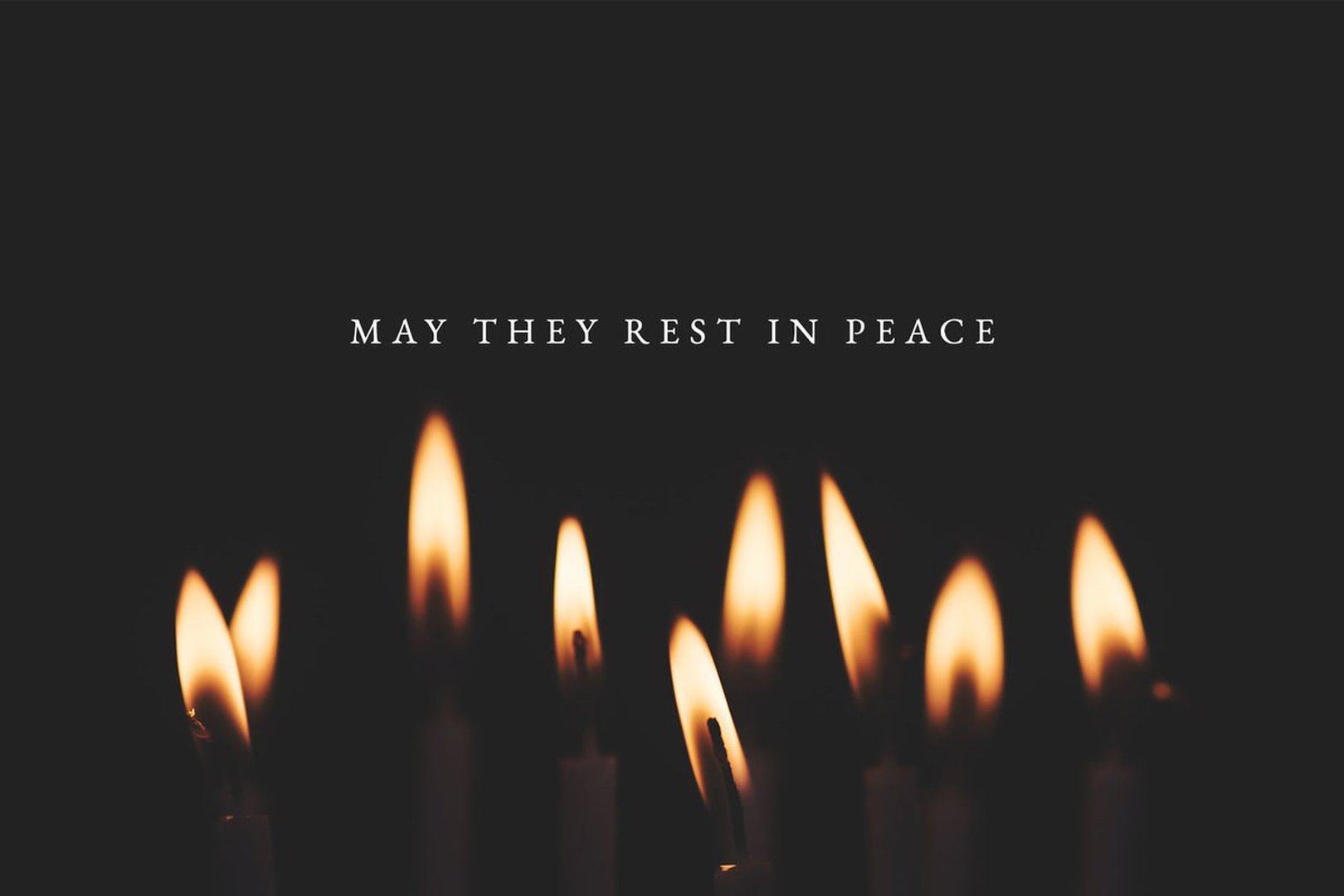At Holy Family Parish on the edge of Greektown, an altar dedicated to the foster father of Jesus holds centuries of tradition, personal meaning
CLINTON TOWNSHIP — Sam Zerilli is honored to help continue a more than 60-year Sicilian tradition of making St. Joseph's Day bread.
On March 19, Zerilli prepared 500 large balls of bread dough and 45 specialty loaves that were to be blessed the next day at the altar dedicated to St. Joseph at Holy Family Church in Detroit, the oldest Italian parish in the city. As he stepped up to the task, Zerilli recalled his own childhood and the blessed bread his family ate on the special feast day, dedicated to the foster father of Jesus.
“A lot of bakeries aren’t doing this anymore, but this is our tradition,” said Zerilli, owner of Zerilli Bakery in Clinton Township.

The tradition is an outgrowth of another Italian tradition related to St. Joseph's feast day: the "St. Joseph Table" or altar, which is replete with food in a communal celebration of the saint's role as a provider for all people.
Traditionally, no can be turned away from St. Joseph's table, which marks a certain trust in God's providence through the saint.
The St. Joseph bread is special. It's different from the daily loaves Zerilli makes at the bakery — for one thing, they are dense, made from semolina flour. The tradition is for simple round loaves, topped with sesame seeds or a cross indentation, or more complicated hand-braided loaves in shapes usually in the form of crowns, St. Joseph staffs, or crosses.
This is the third year Zerilli has taken charge of a special order to make “St. Joseph” bread for the Detroit-area religious society known as San Giuseppe Lavoratore di Cinisi (St. Joseph the Worker of Cinisi, Sicily). Each year, the group celebrates St. Joseph’s feast day at Holy Family with the blessing and distribution of bread to those present at Sunday Mass.

Each year since 1963, when the organization was started, the group celebrates a St. Joseph's Day Mass at Holy Family with the intention of sharing blessed bread with the faithful. A statue of St. Joseph, which majestically sits in a carved grotto on the right side of the church during the regular Masses, is placed at the front of the altar, adorned with flowers with the loaves at the statue’s feet. At the end of Mass, the priest blesses the bread with holy water and a prayer before the distribution begins.
“(The) San Giuseppe (society) was originally started at Holy Family Church with five members and two priests in 1963,” said John Orlando, past president of the society. Last year, the last of the founding five members died. Today, the group is comprised of 90 men, but yearly celebrations occasionally involve up to 450 people.
To Orlando, blessed bread is a tradition that's dear to his Silician roots — he moved to the United States in 1973 — and one he doesn't want to see forgotten.
“We use bread because back in those days, we were short of food, and the main food was bread and pasta,” Orlando said. “To celebrate, they wanted to be able to distribute a little bit of food to those people who couldn’t even afford that.”

The tradition of a “St. Joseph’s table” began in southern Italy, and is still in use today. The “table” or “altar” is often designed in three tiers and includes a statue of the saint as well as food such as bread, citrus, fava beans and other appetizers, which are typically harvested during that season in the local area.
In Italy, the adorned tables are commonly found in private homes and churches. Often, priests will visit the locations, bless them and then encourage the faithful to travel from place to place. Those who visit usually take some food from each table.
“The tradition started when there was a drought in the Middle Ages, and the people prayed to St. Joseph to deliver them from this drought,” said Nick Switzer, a parishioner who enjoyed his second feast celebration at Holy Family with his wife and three children. “So they made an agreement with St. Joseph to offer a feast in his name if he delivered them from the drought.”
Switzer, who is part Italian, said he and his family took a few pieces of the soft bread at the church and later that evening planned to eat it with some olive oil.

“It’s a really cool thing to think you are eating something that is part of a tradition that goes back generations and generations,” Switzer said.
Local historian Nicholas P. Sinacori said traditions like the one at Holy Family are important to the generations of Italians who founded the church.
“Holy Family, which was established in 1908, was for the Sicilian Italians,” explained Sinacori, founder and president of the Fairview Historical Society in Detroit. “They would have their own church and their own priest and everything that they could relate to, like their feast day celebrations.”
The communal gathering around St Joseph’s table was one of many celebrations immigrants took from their homeland, making it their own once they arrived in the United States, he said.

“It brings everyone together,” Sinacori said. “It crosses generations, and social levels. It is a celebration of the total community.”
Sinacori said historically, the blessed bread was a symbol for “the Bread of Life,” and wheat, which was commonly found, was sustenance.
“And if you take it to the Lord’s Last Supper, it is part of the celebration,” he added. “Bread has in it the life-giving quality. Mary is the mother of Christ, and St. Joseph is the worker, a carpenter by trade. It is the identity of St. Joseph as a father or foster father that we see he is the bread-winner.”
The San Giuseppe club will come together again at Holy Family to celebrate another feast day, dedicated to St. Joseph the Worker, in May, complete with a procession and a decked-out St Joseph’s table with a meal offered after Mass.
Copy Permalink
Feast days











